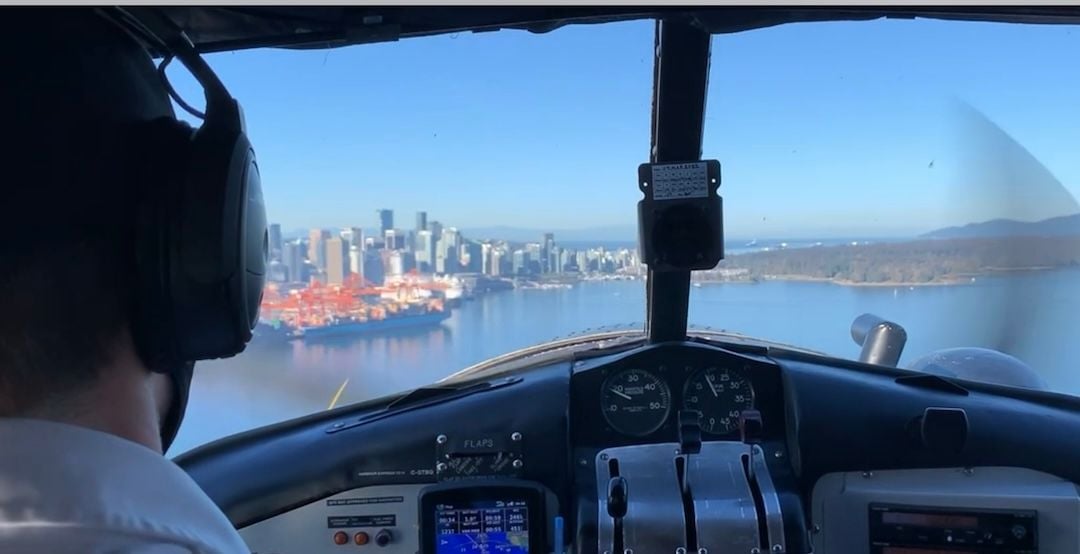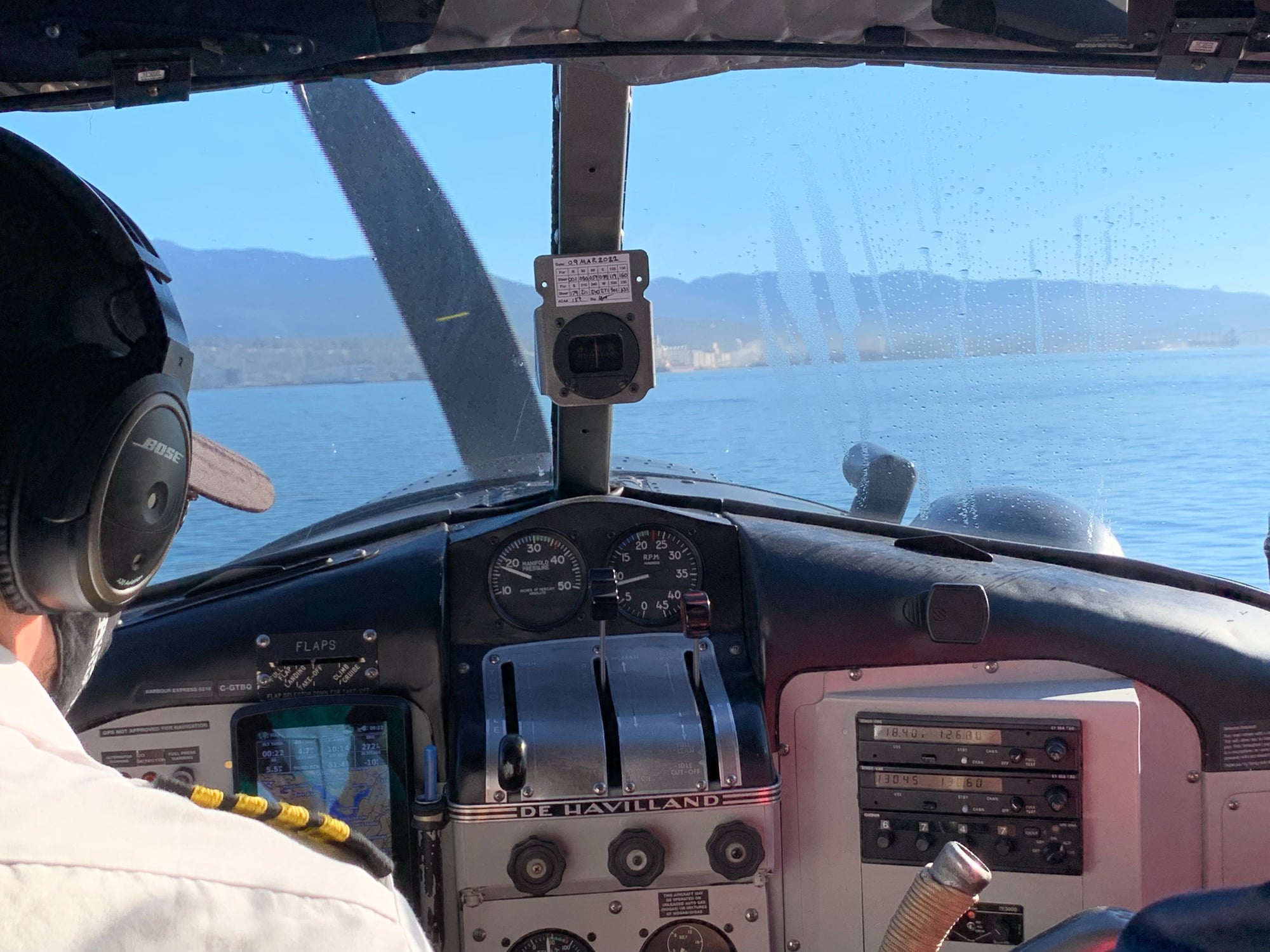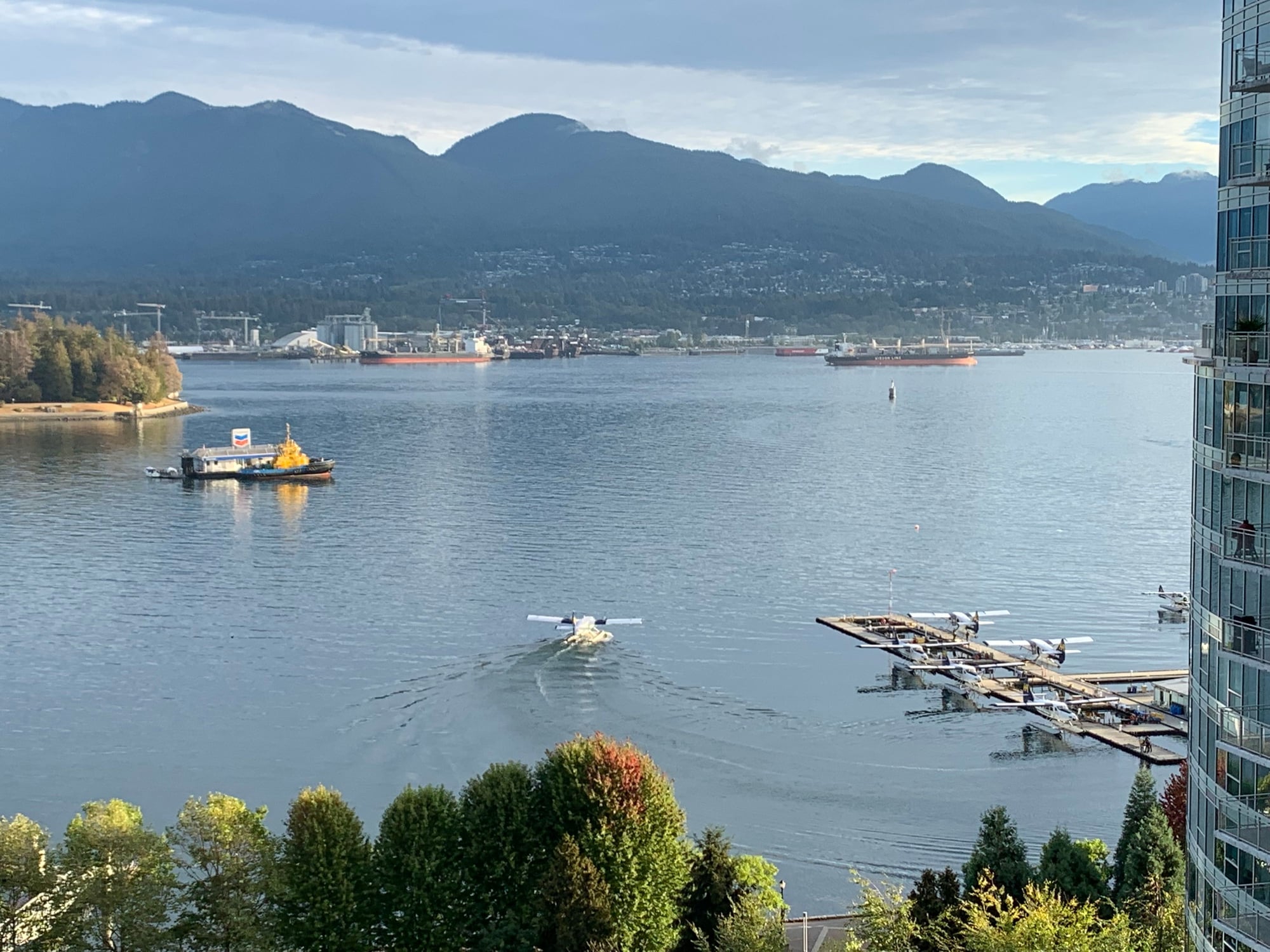seaplane Collides with Boat Vancouver Harbor
The "give way to right" etc rule has long been modified to take account of vessel's size - and distance needed to change speed/direction.
I've no experience of aircraft on water, but think they should be treated as large unmanoeuverable vessel's.
Or as trawling or towing vessels.
I've no experience of aircraft on water, but think they should be treated as large unmanoeuverable vessel's.
Or as trawling or towing vessels.
The following users liked this post:
Ultimately I suspect if you're going to mix seaplane ops at up to 90mph with the sort of goons that hoon around obliviously in speedboats on the same stretch of water the occasional collision must be inevitable.
What I do find astonishing is the difficulty of discovering the extent, location and regulations pertaining to seaplane ops in the area. If I, as a reasonably aware (though Europe-based) aviator can discover nothing whatsoever about the location and rules of the seaplane operating area what chance does aviation-oblvious Buck Schmuck have when planning (do they ever 'plan'?) a picnick trip in his Binliner?
What I do find astonishing is the difficulty of discovering the extent, location and regulations pertaining to seaplane ops in the area. If I, as a reasonably aware (though Europe-based) aviator can discover nothing whatsoever about the location and rules of the seaplane operating area what chance does aviation-oblvious Buck Schmuck have when planning (do they ever 'plan'?) a picnick trip in his Binliner?
I suppose this event is a rarity, so "fixing" it is problematic.
1) Add a chin camera to the plane with a video screen so they can see forward when the nose is blocking the view
2) Have a boat with a spotter just off to the side in radio communication to give the all clear.
Suggestions about what boaters might be required to do would not deal well with drunks, new boaters, teens at the wheel. This boater was nearly decapitated for not paying attention to a plane bearing down on him. A booklet with cautions isn't going to confidently produce better behavior.
1) Add a chin camera to the plane with a video screen so they can see forward when the nose is blocking the view
2) Have a boat with a spotter just off to the side in radio communication to give the all clear.
Suggestions about what boaters might be required to do would not deal well with drunks, new boaters, teens at the wheel. This boater was nearly decapitated for not paying attention to a plane bearing down on him. A booklet with cautions isn't going to confidently produce better behavior.

Moderator
But I've not seen much at all on the aviation side! 

The video makes it appear that the pilot could have seen the boat in time, But, I have not walked in that pilot's shoes. Though the boat approaches from the right, making it less visible to the pilot, the pitch attitude on the water would not preclude being able to see the boat once it was not being hidden behind a doorpost or such. Once on the step, large direction changes are less easy. I pay particular attention to any boats which might cross my takeoff path before I begin, not only to prevent a risk of collision, but more practically to prevent my having to cross a wake. There are still fools who like to "play" with airplanes on the water.
The following 3 users liked this post by Pilot DAR:
Join Date: Jun 2010
Location: Nanaimo, B.C.
Age: 66
Posts: 51
Likes: 0
Received 0 Likes
on
0 Posts
Colregs are clear that a) seaplanes are vessels and b) all vessels are required to keep clear of vessels whose ability to manoeuvre is restricted.
That leaves us with the question: is a seaplane taking off a vessel with restricted ability to manoeuvre? If it is, the seaplane has ROW. If it isn't, the powerboat had ROW.
I have seen a few references to the seaplane area being marked clearly on the chart.
Here is Navionics: https://webapp.navionics.com/#boating@13&key=muzkHngknV
It is quite hard to see the seaplane operation area outlined with a dashed green line. I know from experience that boats entering or leaving Coal Harbour do not avoid that area, so it is important to know who has ROW.
That leaves us with the question: is a seaplane taking off a vessel with restricted ability to manoeuvre? If it is, the seaplane has ROW. If it isn't, the powerboat had ROW.
I have seen a few references to the seaplane area being marked clearly on the chart.
Here is Navionics: https://webapp.navionics.com/#boating@13&key=muzkHngknV
It is quite hard to see the seaplane operation area outlined with a dashed green line. I know from experience that boats entering or leaving Coal Harbour do not avoid that area, so it is important to know who has ROW.
I was more interested in what the boaters had to warn them and the official Nautical Charts I have seen have the area marked (so something missed on Navionics as noted by dash34) and I also found a "guide" which appears to be one of those things issued to all water users as it covered all sorts of useful stuff including the operation of seaplanes but several searches on good old "G" didn't lead me to anything much on the aeronautical side. Normally I can find all sorts of stuff very quickly but, on this topic, I couldn't find much in the time I looked. Your average boater would probably not even think to look at Aeronautical stuff - I have come across many who look upon Charts as something to obstruct a flat area best suited to holding beer or wine glasses!
What I did note (as both an ex-sailor and ex-pilot!) was the number of marina berths just to the West in Coal Harbour itself such as Bayshore West Marina and that, really, the only way in/out takes you through the seaplane area. To avoid it you'd have to really hug the coastline and head North to Brockton Point so that sort of suggests that cutting into/through the seaplane area marked on the charts would be frequent despite the warnings.
What I did clock in the video of the T/O looking NNE was another powerboat heading East (L - R to the pilot) which had passed the boat involved but could/would have crossed the T/O path less than a minute earlier. Someone said ATC mentioned a boat heading West to the pilot as he was about to depart. My only thought is that he saw that W - E boat when it was on his side, missed the "heading West" bit (or thought ATC said something like "from the West") and thought "Ah, there it is steadily clearing to my right (towards the East) so that's no longer an issue any more". Even if he'd then seen the West-bound boat when up on the step, it would have taken a few seconds to do a "There it is ...... hang on, that's close! Bu&&er, that's coming this way!!!! What the......??????".
Anyway, that's just an idle observation - not a statement as to what actually happened! I'll let the professional Accident Investigators do their thing! Cheers, H 'n' H
An aspect which needs to be considered, about the captain of the boat that was hit, was the closure picture. They may well have seen the aeroplane in the distance starting it's takeoff run, and considered that they (the boats) would pass well in front due the to aspect angle and low speed. Now, throw in a craft (in this case, the Beaver) constantly changing it's speed by a magnitude of say 8 (10kts to 80kts) and the constant-aspect collision aspect view would be changing constantly. It's easy, in a boat, to "miss" another boat, provided the other boat is doing a constant velocity; same as in the air. But throw in a gross speed change though and all bets are off, you don't know whether you're going to clobber them or not. Throw in the startle factor and I can see them freezing.
The following users liked this post:
The "give way to right" etc rule has long been modified to take account of vessel's size - and distance needed to change speed/direction.
I've no experience of aircraft on water, but think they should be treated as large unmanoeuverable vessel's.
Or as trawling or towing vessels.
I've no experience of aircraft on water, but think they should be treated as large unmanoeuverable vessel's.
Or as trawling or towing vessels.
To add to the confusion in this specific case, the boat may have been in an area designated for seaplanes to be stand-on.
[Disclaimer: I am a sailor not a pilot]
I looks like Vancouver set a local rule, but the Seattle rule is vague and in conflict with the "Amalgamated International and US Inland Navigation Rules" that I know. That said, if you are going on the water you need to know those rules, local or otherwise.
There is no notion of "right of way" in either the international (COLREGS) or inland rules. These stress that avoiding collision is the responsibility of both vessels (and blame if a collision occurs). There is the "give-way vessel" that needs to do something and the "stand-on vessel" that needs to hold course and speed. The roles can change during an encounter. Outside of the dedicated seaplane corridors, rule 18(e) applies to seaplanes and they are generally the give-way vessel (cited as 18(d) in an earlier post). Regardless of the dedicated corridor, rule 17(a)ii and 17(b) apply to the boat where it becomes the give-way vessel and under 17(b) must maneuver to avoid collision if the seaplane does not maneuver. Our boater also seemed to forget rule 5 (lookout).
Everybody was very, very lucky here.
I looks like Vancouver set a local rule, but the Seattle rule is vague and in conflict with the "Amalgamated International and US Inland Navigation Rules" that I know. That said, if you are going on the water you need to know those rules, local or otherwise.
There is no notion of "right of way" in either the international (COLREGS) or inland rules. These stress that avoiding collision is the responsibility of both vessels (and blame if a collision occurs). There is the "give-way vessel" that needs to do something and the "stand-on vessel" that needs to hold course and speed. The roles can change during an encounter. Outside of the dedicated seaplane corridors, rule 18(e) applies to seaplanes and they are generally the give-way vessel (cited as 18(d) in an earlier post). Regardless of the dedicated corridor, rule 17(a)ii and 17(b) apply to the boat where it becomes the give-way vessel and under 17(b) must maneuver to avoid collision if the seaplane does not maneuver. Our boater also seemed to forget rule 5 (lookout).
Everybody was very, very lucky here.
As others have said, both vessels were at fault, but the seaplane pilot is likely to carry the majority of the responsibility for the collision.
Reminds me of How to Avoid Huge Ships by Captain John W. Trimmer, currently selling new for $290 in paperback with some used at $160.
Many boaters also probably have no idea that many seaplanes have no reverse and can't do a quick stop.
That is not true. Nothing in the steering or sailing rules reference a vessels "size" or "distance needed to change course" for the very simple reason that these are unknowable on observation and cannot be used to give a definitive precedence. The rules do establish a unambiguous hierarchy for stand-on and giveway based on ability to maneuverer, but these are very specific (constrained by draft, not under command etc) and invoked by clear day and night signals. Avoiding collisions is easy if you know what the other vessel is going to do.
As others have said, both vessels were at fault, but the seaplane pilot is likely to carry the majority of the responsibility for the collision.
As others have said, both vessels were at fault, but the seaplane pilot is likely to carry the majority of the responsibility for the collision.
Join Date: Jul 2013
Location: In a Pineapple Under the Sea
Age: 62
Posts: 157
Likes: 0
Received 0 Likes
on
0 Posts
An aspect which needs to be considered, about the captain of the boat that was hit, was the closure picture. They may well have seen the aeroplane in the distance starting it's takeoff run, and considered that they (the boats) would pass well in front due the to aspect angle and low speed. Now, throw in a craft (in this case, the Beaver) constantly changing it's speed by a magnitude of say 8 (10kts to 80kts) and the constant-aspect collision aspect view would be changing constantly. It's easy, in a boat, to "miss" another boat, provided the other boat is doing a constant velocity; same as in the air. But throw in a gross speed change though and all bets are off, you don't know whether you're going to clobber them or not. Throw in the startle factor and I can see them freezing.
I have a video of one of my departures somewhere - I'll see if I can find it. I probably have a pic of the visibility from the pointy end of one of those Harbor Air Beaver's somewhere too . . .
That is true, but the charted landing area does leave a narrow passage just seaward of the seaplane base where the harbour authority restrictions do not apply. Even if that were not the case, common sense would lead you to make the transit close to the base where aircraft would be moving slowest.
Join Date: Jul 2013
Location: In a Pineapple Under the Sea
Age: 62
Posts: 157
Likes: 0
Received 0 Likes
on
0 Posts
That is true, but the charted landing area does leave a narrow passage just seaward of the seaplane base where the harbour authority restrictions do not apply. Even if that were not the case, common sense would lead you to make the transit close to the base where aircraft would be moving slowest.
Join Date: Jul 2013
Location: In a Pineapple Under the Sea
Age: 62
Posts: 157
Likes: 0
Received 0 Likes
on
0 Posts
And - for what it's worth - those maps don't really reflect real world operations at that terminal. Every time I've flown into that Seaplane terminal - the approach is from the east. Parallel to and just about 100 yards off the starboard side of those cruise ships.







